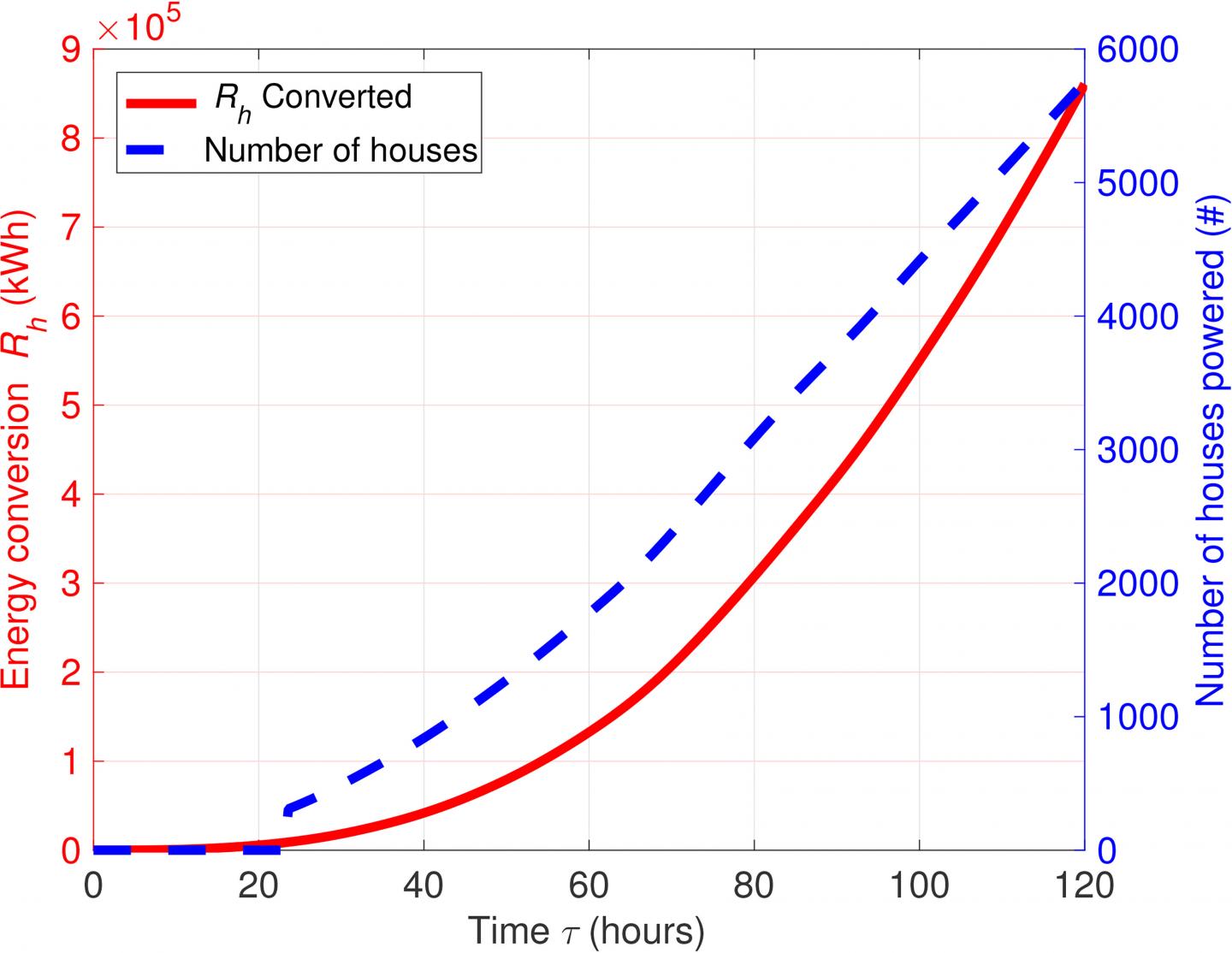Variational calculus technique shows the fastest way to provide enough electricity to restart local power grids hit by hurricanes through ocean wave generators currently in development

Credit: Umesh Korde
WASHINGTON, D.C., June 4, 2019 — When hurricanes strike, loss of electricity ranks as one of the top concerns for relief workers. Blackouts lasting a week or more can hamper recovery efforts, shutter hospitals, threaten public health and disrupt transportation. The monthslong effort to restore power to Puerto Rico following the 2017 hurricane season has led to renewed interest in finding innovative ways to get affected power grids back online.
New work described in the Journal of Renewable and Sustainable Energy, from AIP Publishing, looks to develop a strategy for how floating devices that harness the energy of the oceans’ waves might be able to provide this much needed aid. A researcher at Johns Hopkins University is studying a new approach to supplying electricity that both potentially provides a way of optimizing recovery efforts and poses questions about how relief is currently conducted in disaster areas.
Researcher Umesh Korde found steady linear improvement to infrastructure might not be the fastest way to get affected areas back online. He said mobile electricity-generating ocean platforms could be brought to such locations by sea to restore energy to those impacted areas more quickly.
Using variational calculus, Korde found if mobile electricity-generating ocean devices can become a reality, it appears a quicker recovery path could be achieved through daisy chaining multiple wave energy devices with a temporary connection to shore.
“The question is, among all the different functions of time, what’s the function that minimizes the total length of time that it takes to get sufficient power to restart the power grid for an island?” he said.
As a hurricane strikes, damage to an area’s power grid prompts other areas in the national grid to pitch in electricity. A relatively small, isolated grid on an island like Puerto Rico might lack access to a nearby functioning grid and experience a complete shutdown.
“What you see in many cases is that they don’t have access to enough spare electricity to turn themselves back on,” Korde said. “We might just need to provide enough to ‘black-start’ that grid.”
For now, however, the optimization Korde has calculated remains a tentative plan pending availability of the correct technology. A handful of wave generator projects produce electricity around the world, but these generators are not mobile enough to quickly deploy after hurricanes.
Korde hopes his paper helps provide researchers looking to improve wave generator technology with a broader scope of how their technology can be used to meet the pressing needs of disaster areas.
###
The article, “Enhancing the resilience of energy systems: Optimal deployment of wave energy devices following coastal storms,” is authored by Umesh Korde. The article will appear in Journal of Renewable and Sustainable Energy on June 4, 2019 (DOI: 10.1063/1.5093731). After that date, it can be accessed at http://aip.
ABOUT THE JOURNAL
Journal of Renewable and Sustainable Energy is an interdisciplinary, peer-reviewed journal covering all areas of renewable and sustainable energy that apply to the physical science and engineering communities. See http://jrse.
Media Contact
Larry Frum
[email protected]
Related Journal Article
http://dx.



